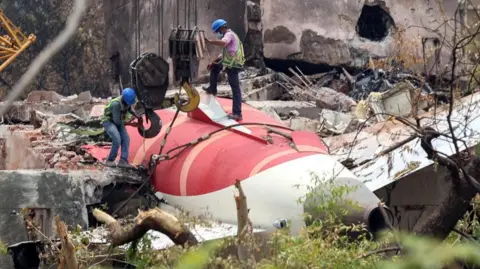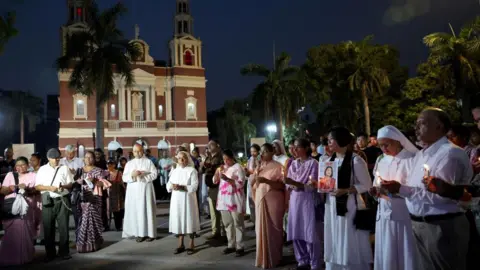- Columnists
Dollar-cost averaging: How to stop worrying about the market and start enjoying automated investing
时间:2010-12-5 17:23:32 作者:Startups 来源:Explainers 查看: 评论:0内容摘要:began on April 1, 1945 when the U.S. troops, in their push for mainland Japan, landed on the island. It lasted until late June, killing more than 200,000 people. Nearly half of them were civilian residents of Okinawa, including students and victims of mass suicides ordered by the Japanese military, which waged the war in the name of Naruhito’s grandfather, late Emperor Hirohito.began on April 1, 1945 when the U.S. troops, in their push for mainland Japan, landed on the island. It lasted until late June, killing more than 200,000 people. Nearly half of them were civilian residents of Okinawa, including students and victims of mass suicides ordered by the Japanese military, which waged the war in the name of Naruhito’s grandfather, late Emperor Hirohito.
Humanitarian groups had warned for weeks that having people collect aid in areas with a military presence would expose them to violence.“This was a ludicrous and ineffective distribution mechanism that was going to end up deadly, which is, tragically, exactly what we are seeing,” said Arwa Damon, founder of the International Network for Aid, Relief and Assistance.

The existing U.N.-run system operates differently, with workers taking aid to Palestinians wherever they are.“It is appalling that the humanitarian sector that knows how to do their job is being prevented from doing it because of the false narrative that Hamas controls the aid,” Damon said.Deadly encounters around aid distribution aren’t entirely new. In February 2024, Israeli troops guarding an aid convoy heading to northern Gaza

as a crowd of desperate Palestinians stripped supplies off the trucks. More than 100 people were killed, according to Gaza’s Health Ministry, which is led by medical professionals but reports to the Hamas-run government.After investigating the incident, Israel said its troops fired on a “number of suspects” who ignored warning shots and advanced toward its forces. It said a stampede around the trucks caused “significant harm to civilians.” EU and U.N. officials at the time said most of the casualties were from Israeli fire.

Palestinians have described a frenzied free-for-all to get food once they reach the GHF’s distribution sites.
Boxes of food are left piled up on pallets in an area surrounded by fences and earth berms. Once the sites’ gates are opened, the crowds rush in, with everyone grabbing what they can. Witnesses say some people take multiple boxes, which quickly run out, and that many leave empty-handed.El alemán es el idioma más hablado después del inglés y el español en ocho estados: Colorado, Idaho, Indiana, Kentucky, Montana, Dakota del Norte, Carolina del Sur y Wyoming. En total, más de 871.000 personas mayores de 5 años hablaban alemán en casa en 2021, en comparación con 1,6 millones en 1980.
Florida tenía casi medio millón de hablantes de haitiano, lo que lo convierte en el idioma más común después del inglés y el español. El estado del sol tiene la población haitiana más grande del país.En Minnesota y Wisconsin, el hmong es el segundo idioma no anglo más hablado en casa. Muchos hmong se establecieron en los estados de la región después de huir del sudeste asiático a mediados de la década de 1970 tras la Guerra de Vietnam.
El coreano es el idioma más hablado en Alabama y Virginia, después del inglés y el español.En Dakota del Sur, el dialecto lakota del pueblo sioux era el idioma más común hablado después del inglés y el español.
- 最近更新
- 2025-07-07 07:11:32Company should fix leaky pipes instead of pursuing £2.2bn Oxfordshire project, say activists
- 2025-07-07 07:11:32Iranians ‘in shock’ after major Israeli attack
- 2025-07-07 07:11:32US bombs Iran’s nuclear sites: What we know so far
- 2025-07-07 07:11:32What happens to Nato if the US steps back?
- 2025-07-07 07:11:32How does Israel restrict its media from reporting on the Iran conflict?
- 2025-07-07 07:11:32UK Parliament approves assisted dying bill: How would it work?
- 2025-07-07 07:11:32Tracking Ukraine’s battle against Russia in maps and charts
- 2025-07-07 07:11:32Video Duration 00 minutes 12 seconds play-arrow00:12
- 热门排行
- 2025-07-07 07:11:32The 17 Best Retinol Creams Worth Adding to Your Skin Care Routine
- 2025-07-07 07:11:32In Europe, the ground is being prepared for another genocide
- 2025-07-07 07:11:32A post shared by British Vogue (@britishvogue)
- 2025-07-07 07:11:32Video Duration 02 minutes 38 seconds play-arrow02:38
- 2025-07-07 07:11:32Kardea Brown’s Sweet Heat Baked Beans
- 2025-07-07 07:11:32Real success for Trump in Iran will require de-escalation
- 2025-07-07 07:11:32qualify you for low-mileage discounts
- 2025-07-07 07:11:32Leaders risk getting into a shouting match with Donald Trump over increased defence spending
- 友情链接
- McDonald’s faces boycott over DEI rollback: Who’s protesting and when Raleigh homers again as Mariners romp over Twins 11-2 Wall Street should heed the signal from Mamdani’s mayoral race Amid Iran market risks, watch gas as well as oil A road map to rebalance the Nato alliance How to protect your money if Middle East conflict has you worried AOLA pizza tour guide helped us test 16 frozen pizzas: These are the winners A-Z Animals Articles9 incredible lizards that look like dragons Yvette Cooper says Palestine Action has ‘history of unacceptable criminal damage’ Allrecipes7 hours ago5 foods you should never cook in a slow cookerSome of these might surprise you 3 hours ago Home sales just posted their slowest May in 16 years Sarah Michelle Gellar wants to ‘bring back everyone who has died’ in the original for… Further disruptions to global supply highlight urgent need for Europe to diversify energy sources Weekend tornadoes kill 6 in North Dakota and New York, toss trees and train cars 4 hours ago For Independence Day, NPR wants to know: What does freedom mean to you? Further disruptions to global supply highlight urgent need for Europe to diversify energy sources Further disruptions to global supply highlight urgent need for Europe to diversify energy sources Trump promises end to ‘12 day war’ between Israel and Iran UK moves to ban pro-Palestinian protest group after air base break-in Which goddess represents you, based on your zodiac sign 17 easy make-ahead dishes for stress-free summer picnics Sprawling Heat Dome Could Smash June Records In Northeast, Midwest, Including 100s In… Report: Iran state media say attack has begun on U.S. bases in Qatar and Iraq Maps show heat wave forecast as much of U.S. swelters A-Z Animals Articles9 incredible lizards that look like dragons The Pioneer WomanLooking for a healthier snack? Fuel up with these high-protein ideas Oil tumbles as traders respond to Trump’s ‘ceasefire’ Home sales just posted their slowest May in 16 years Sprawling Heat Dome Could Smash June Records In Northeast, Midwest, Including 100s In… 20 common old-school sayings and what they actually mean
